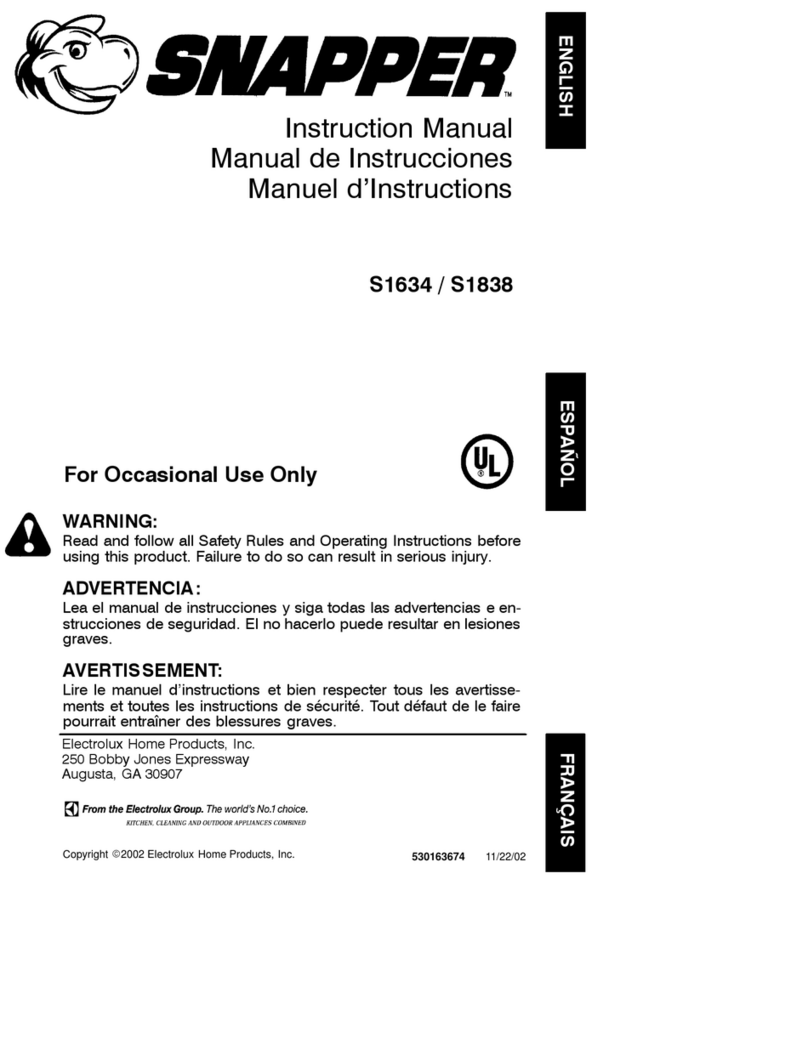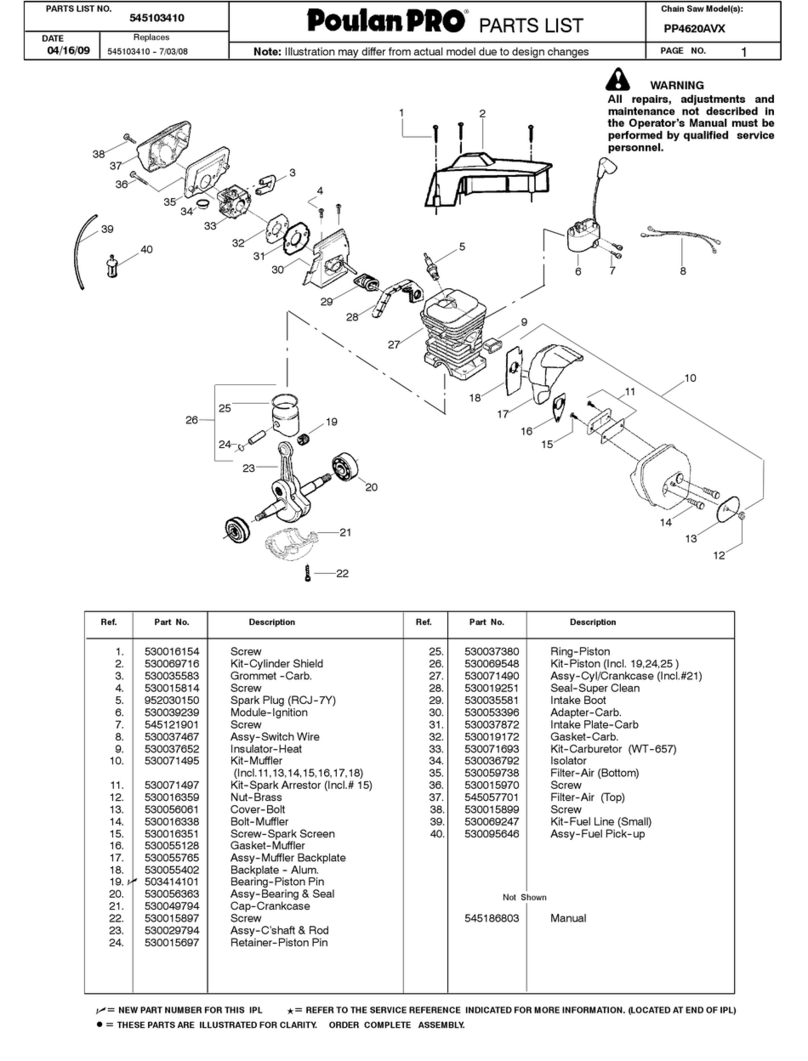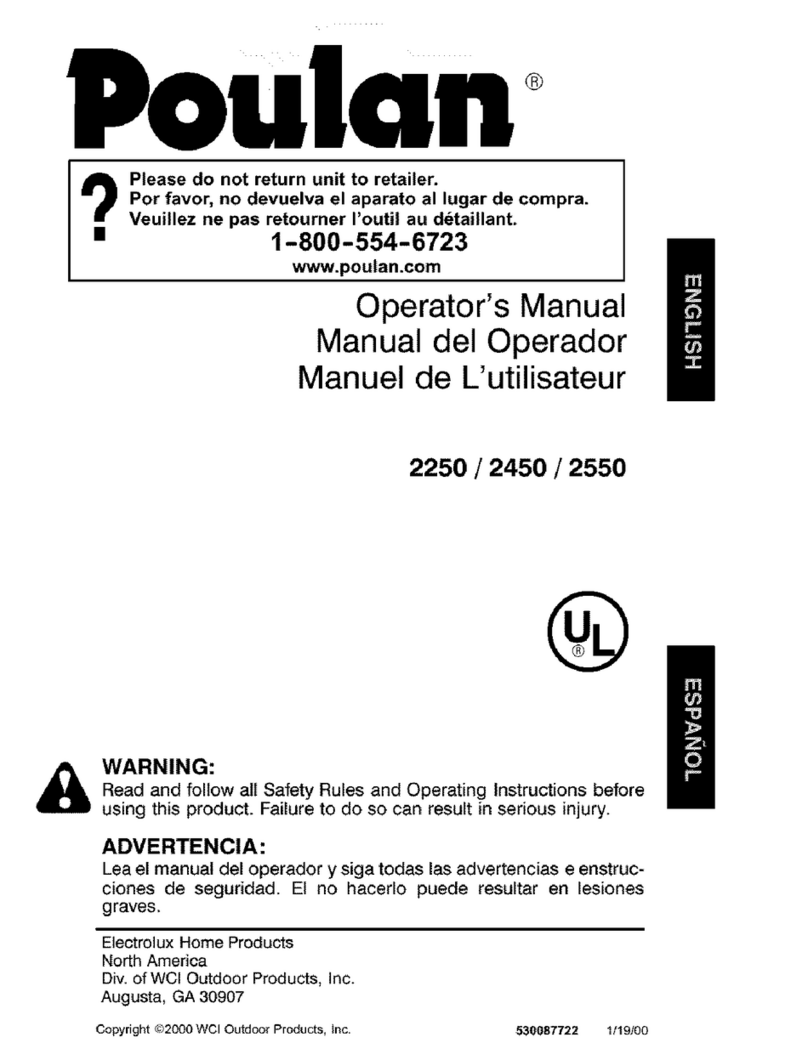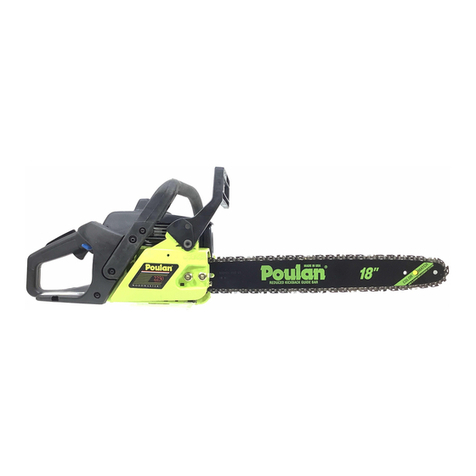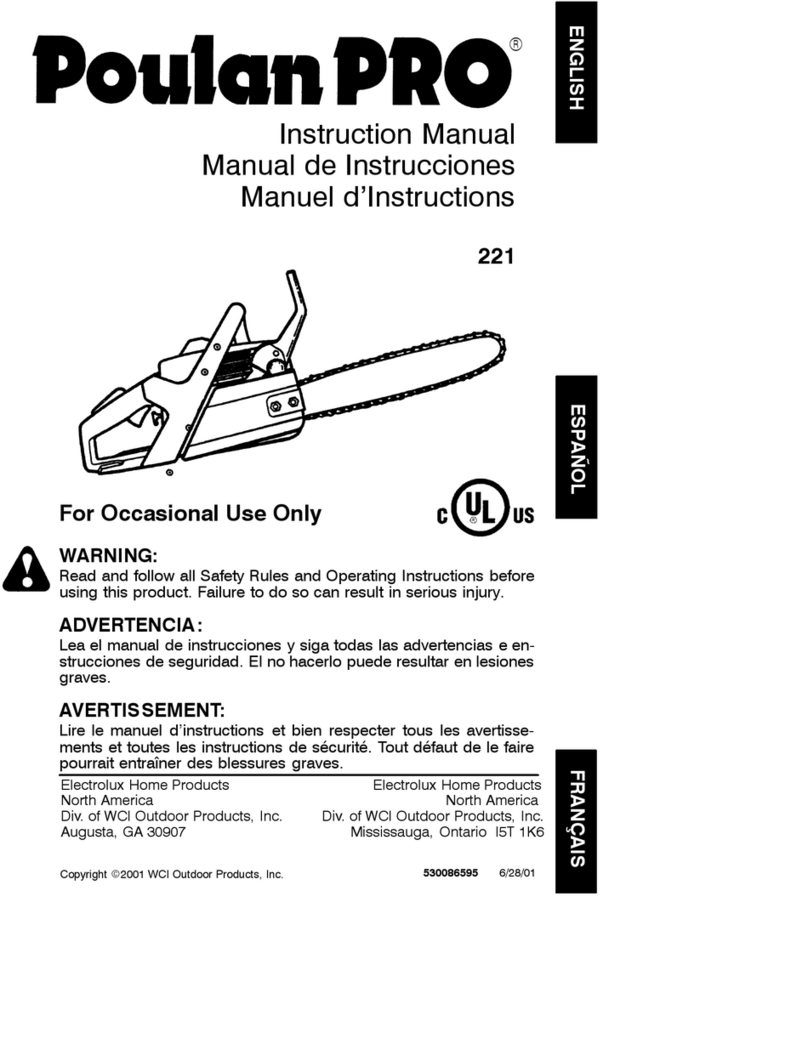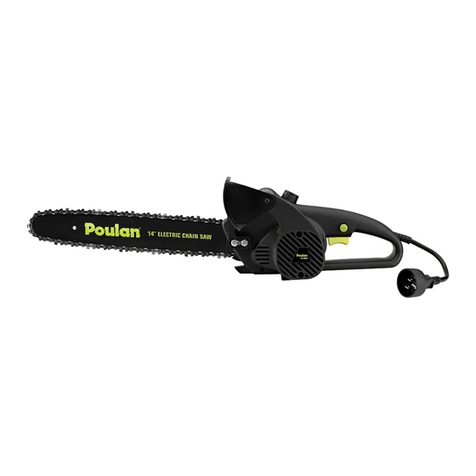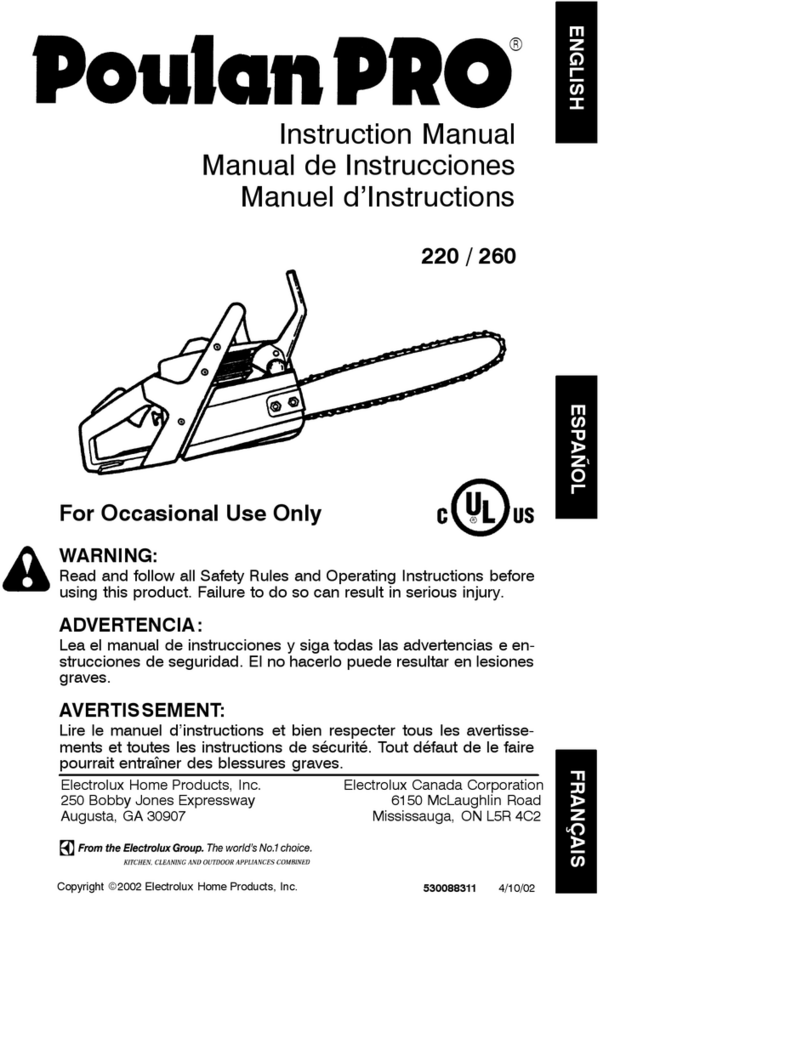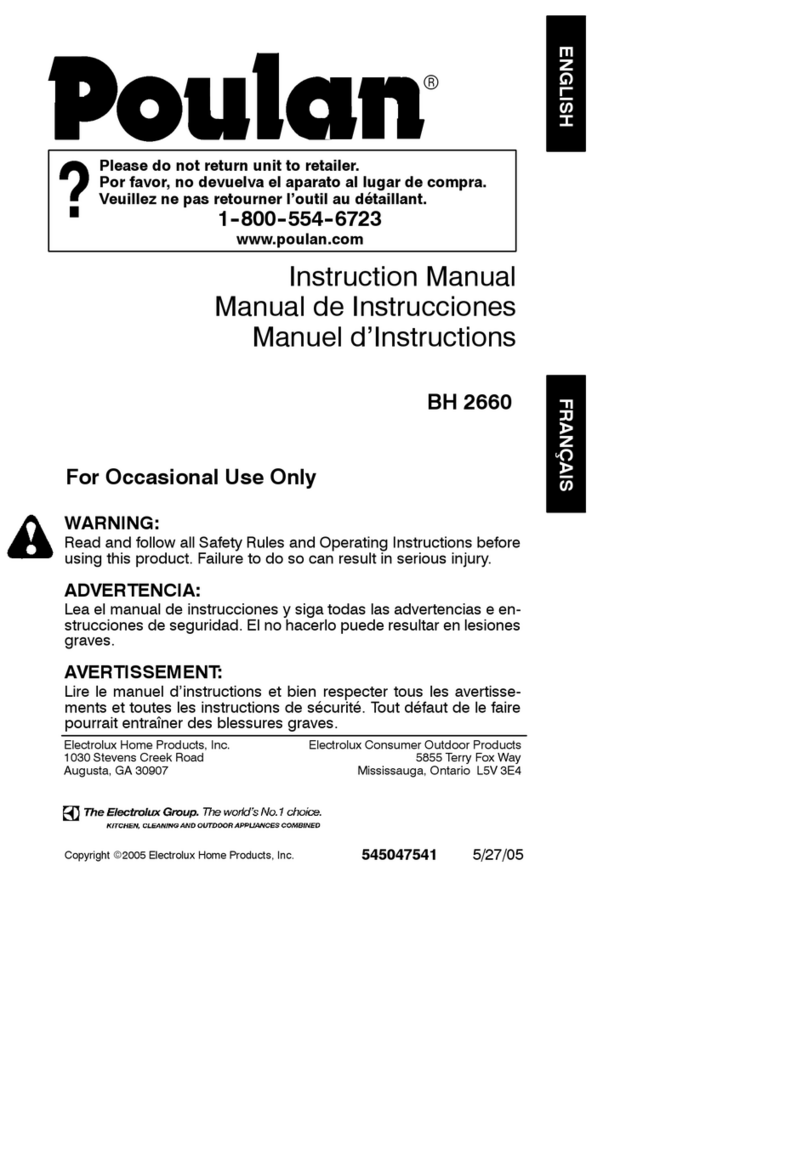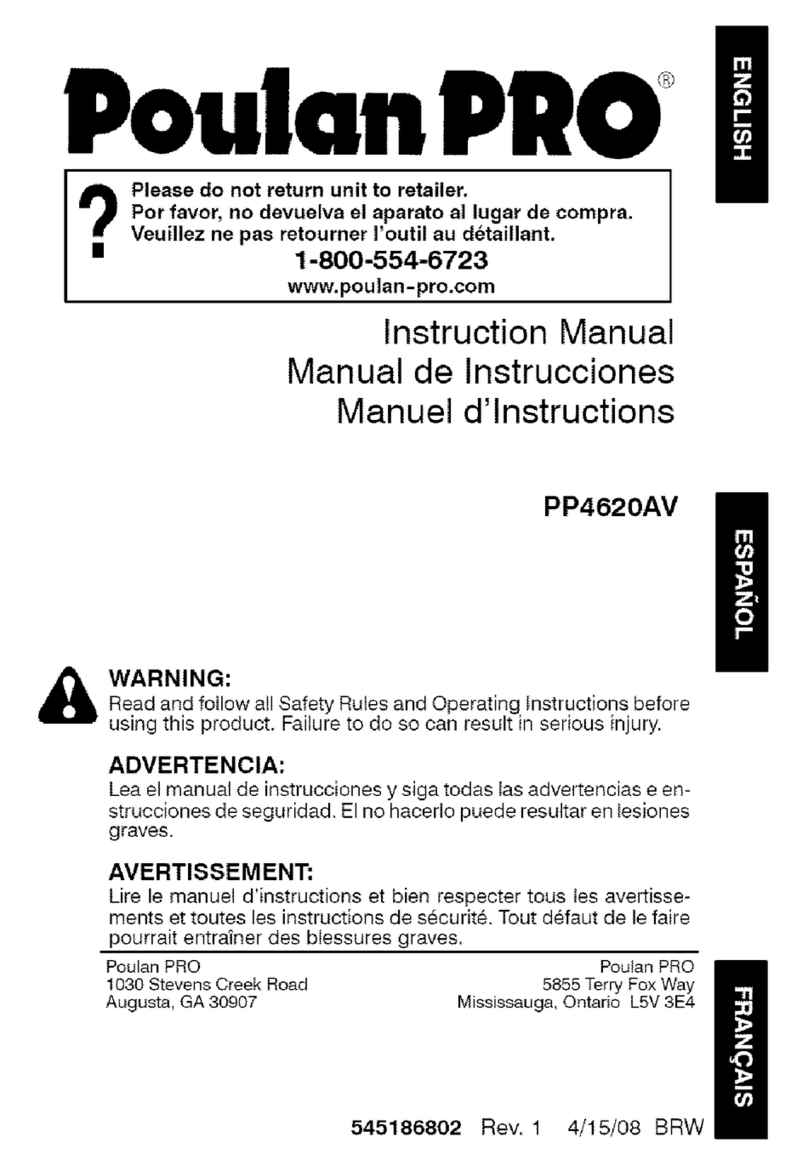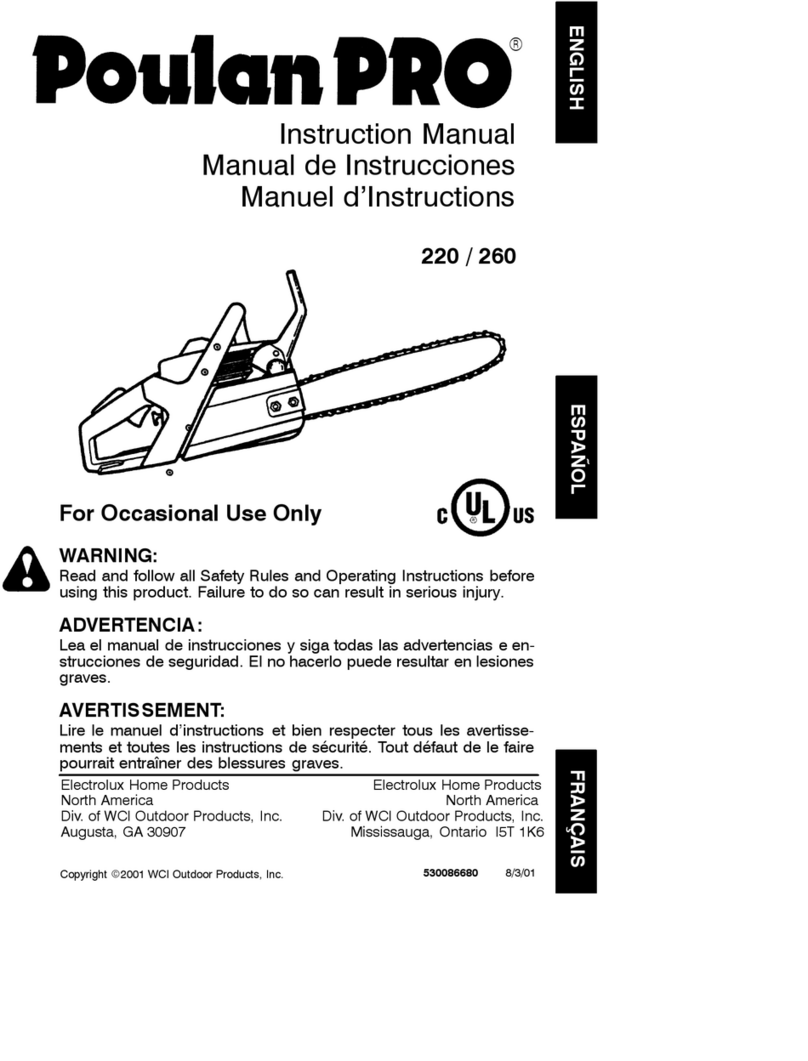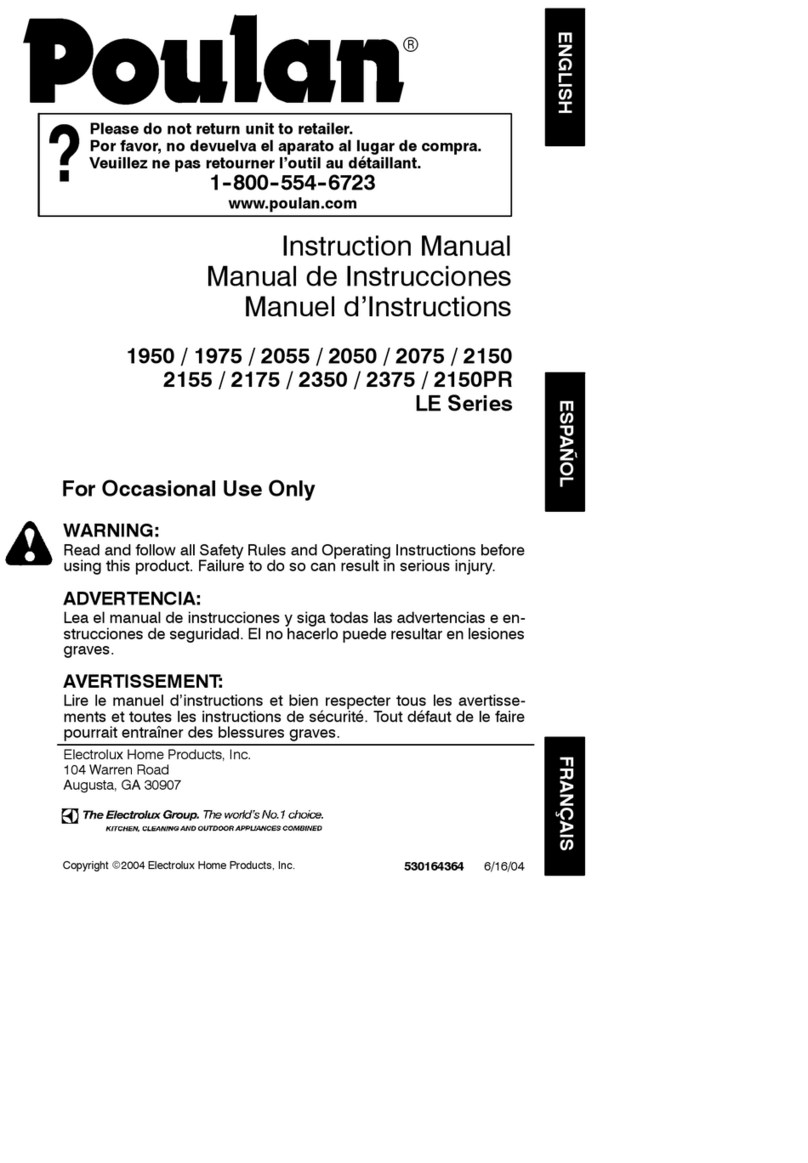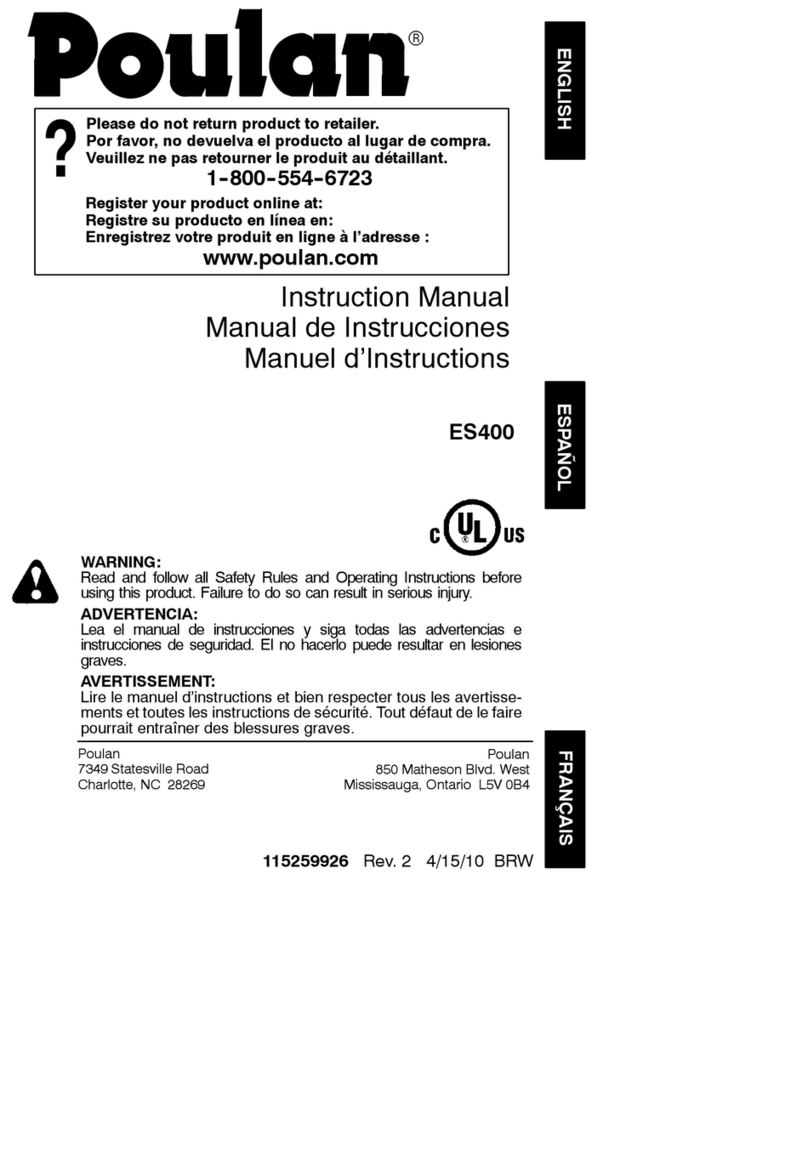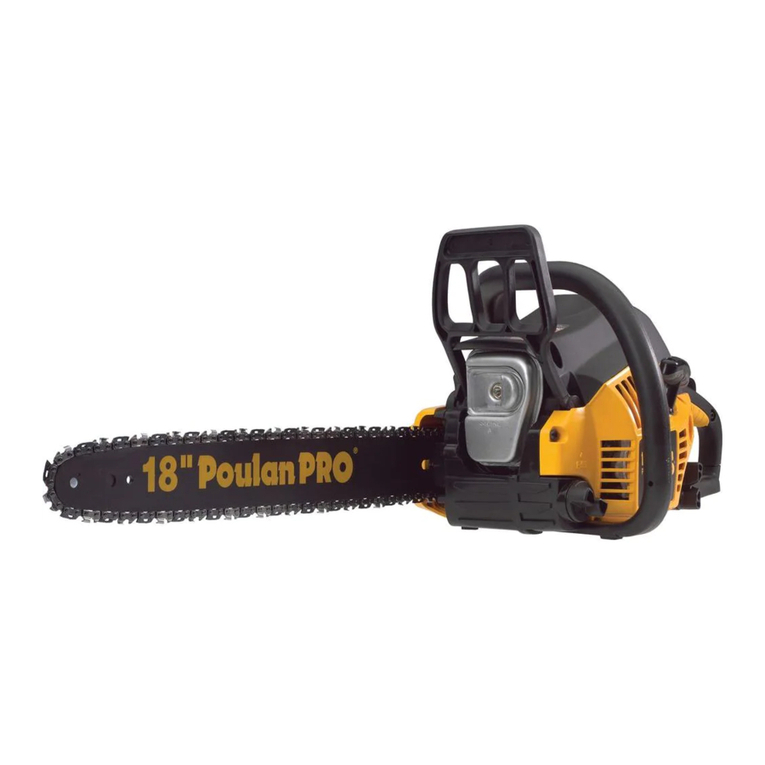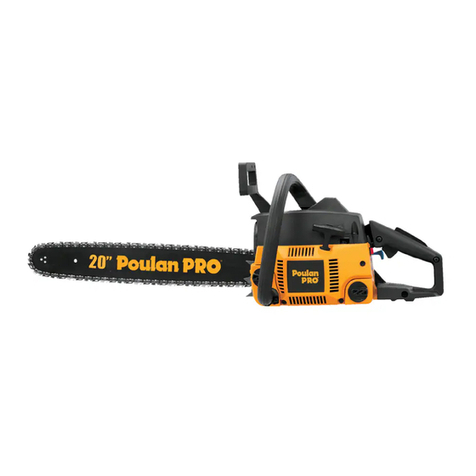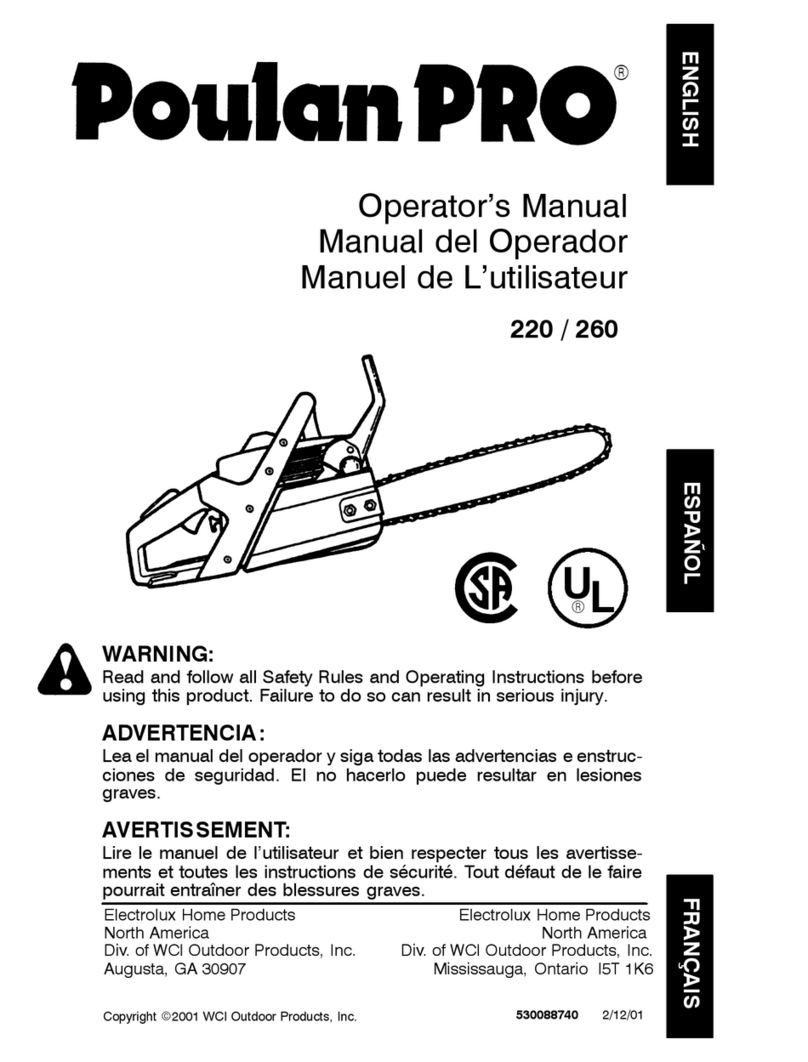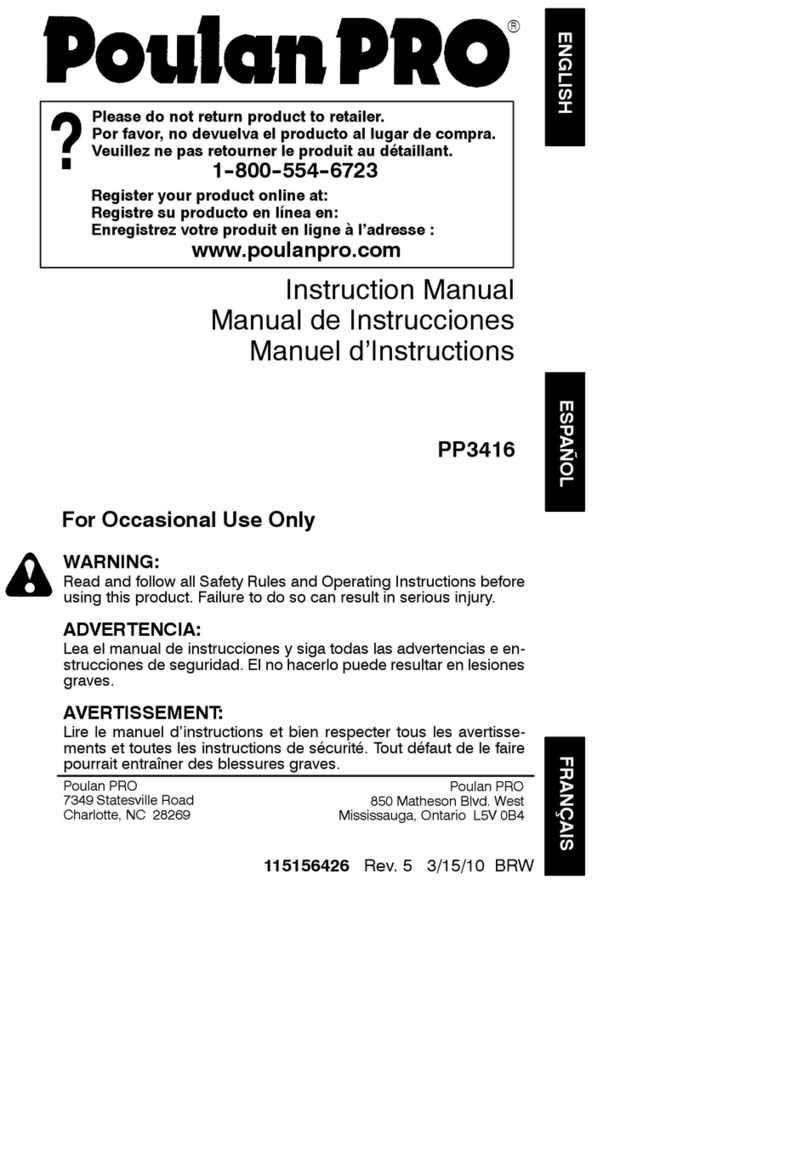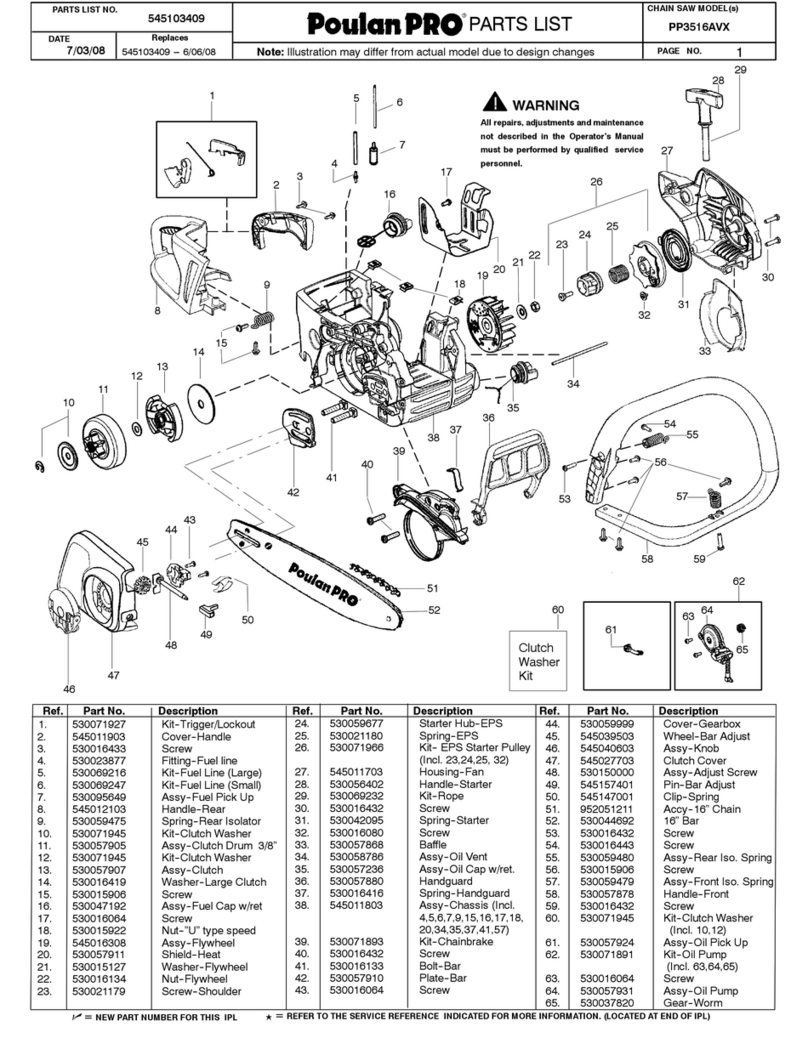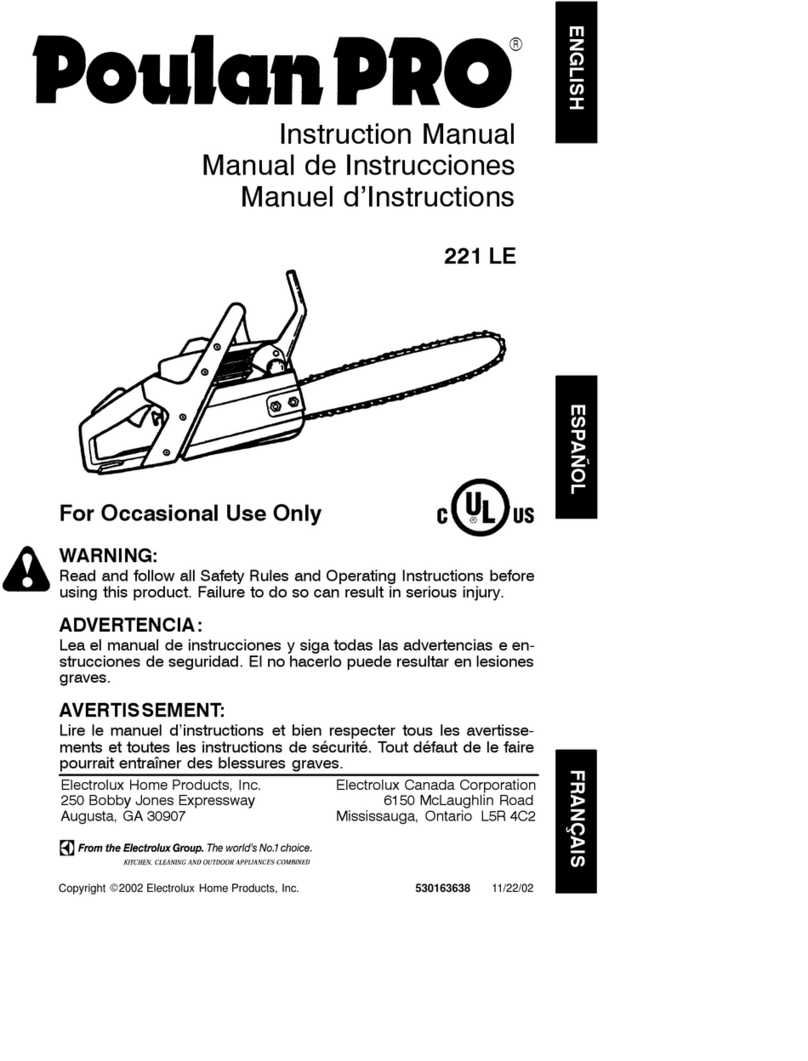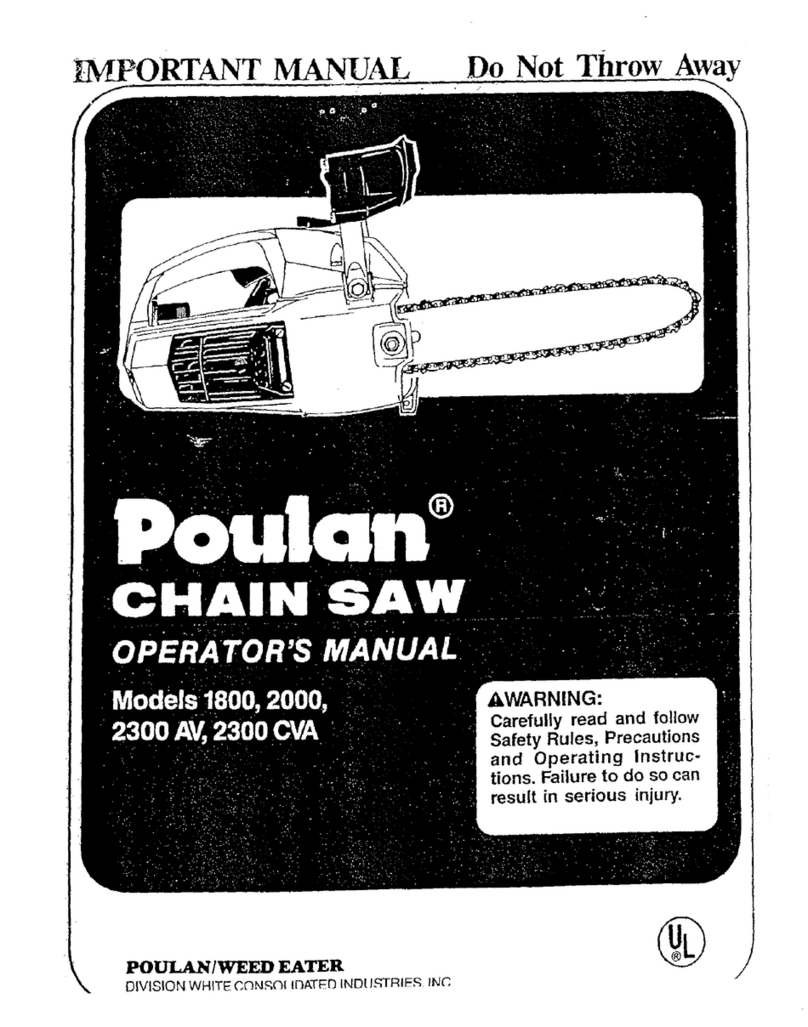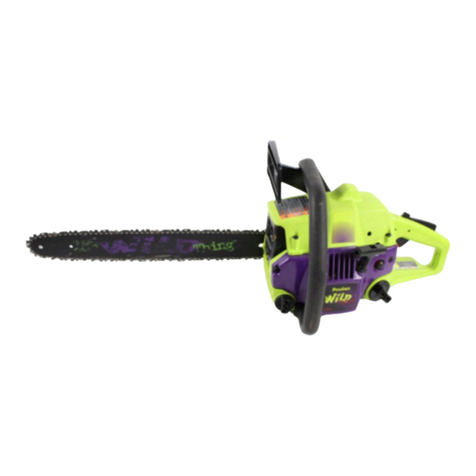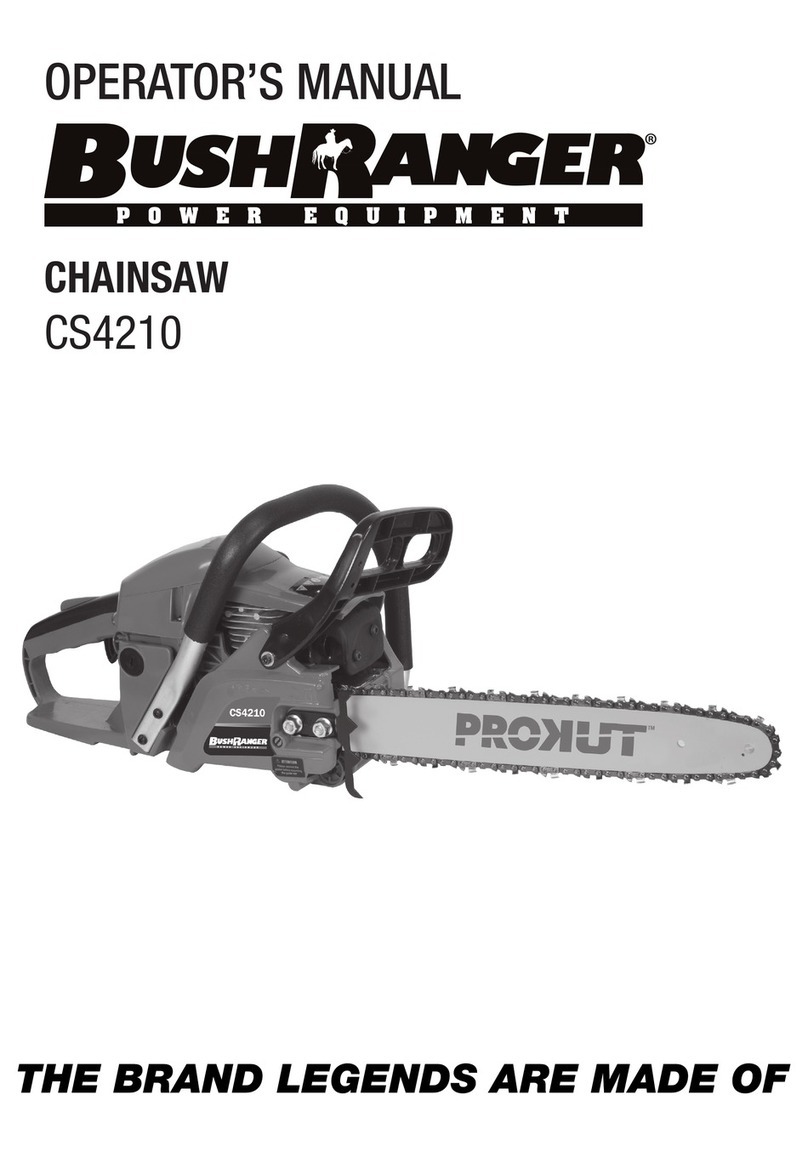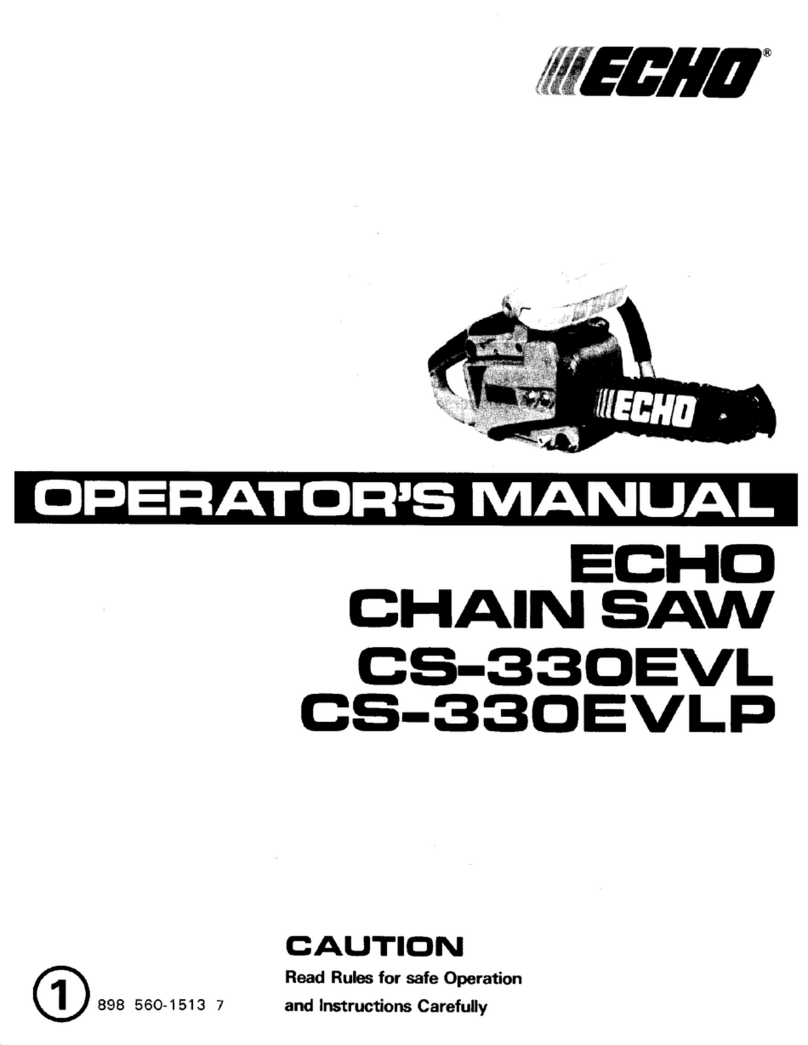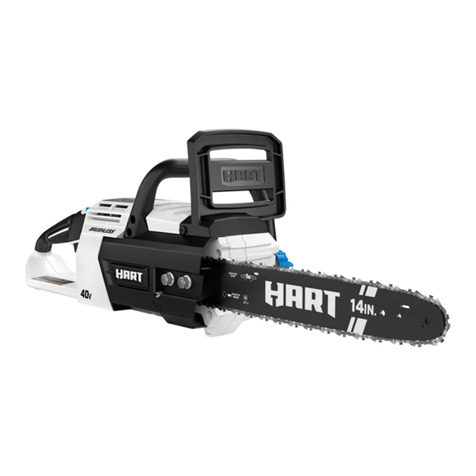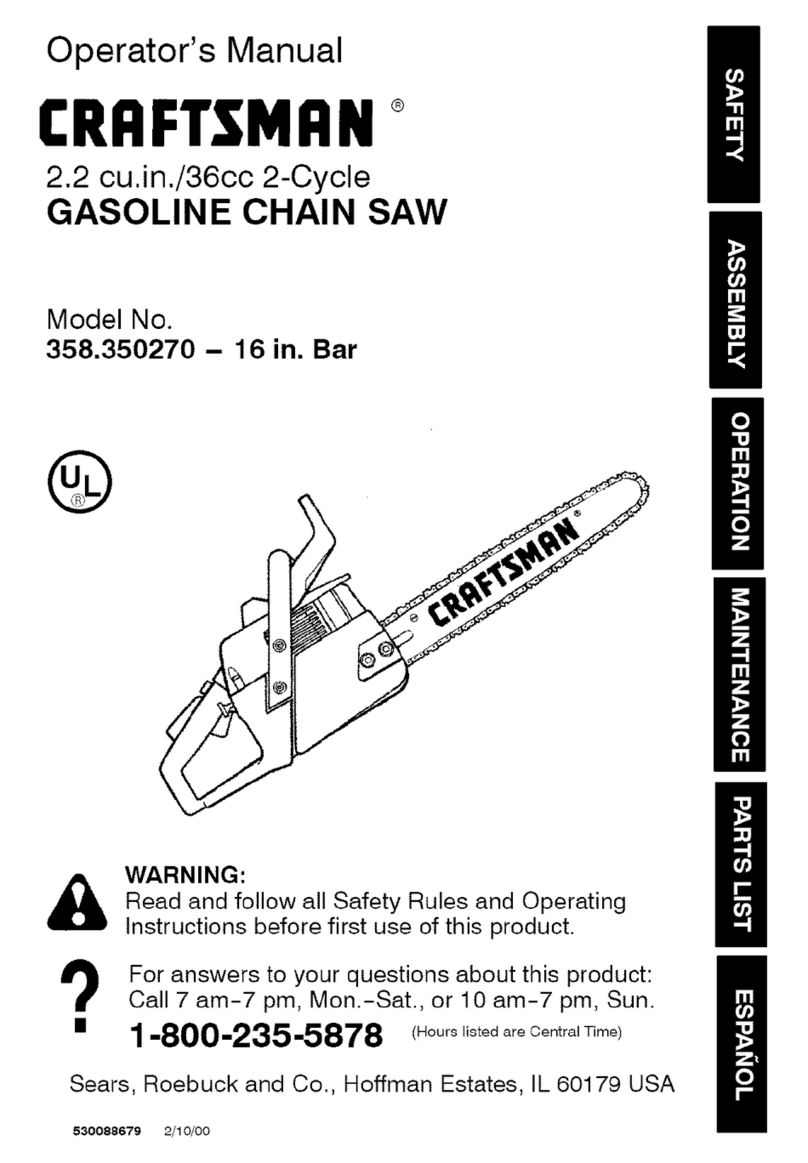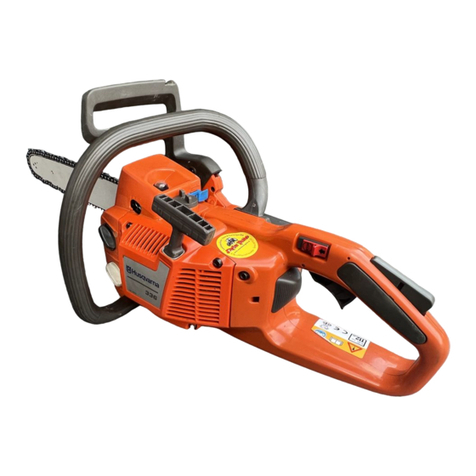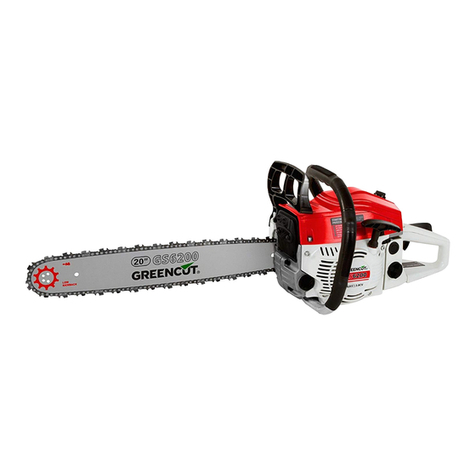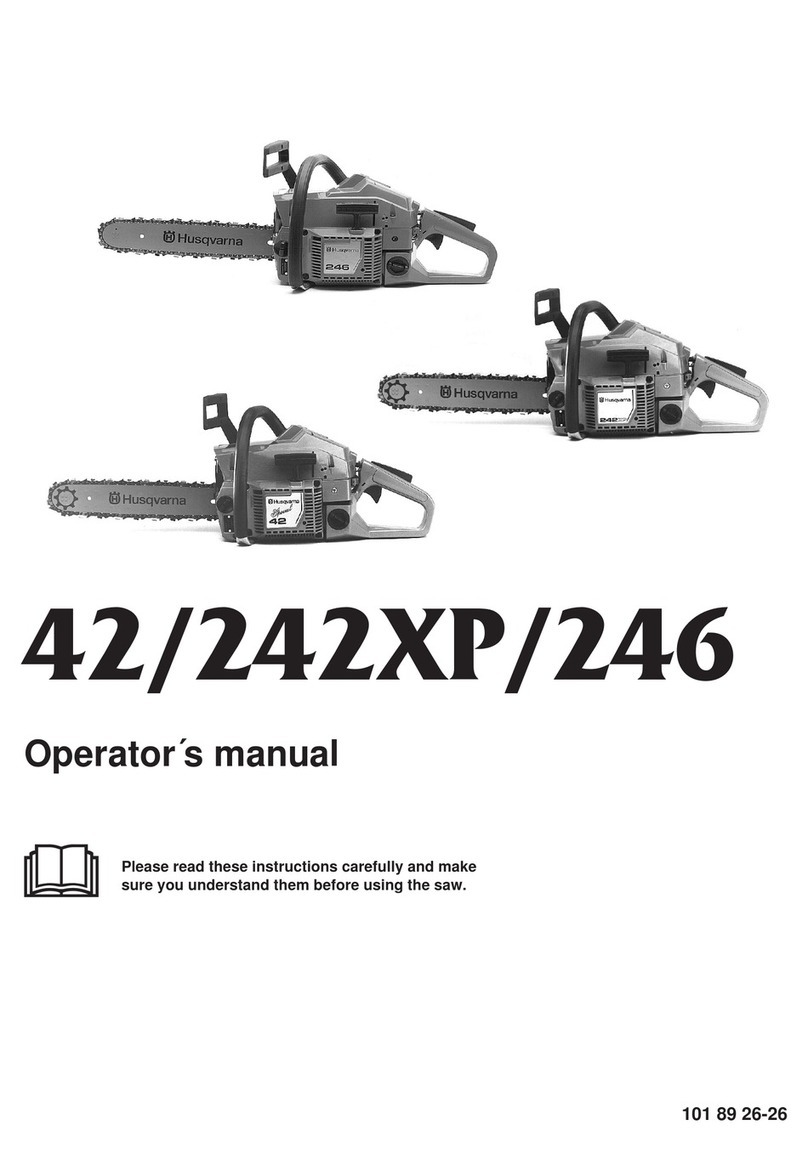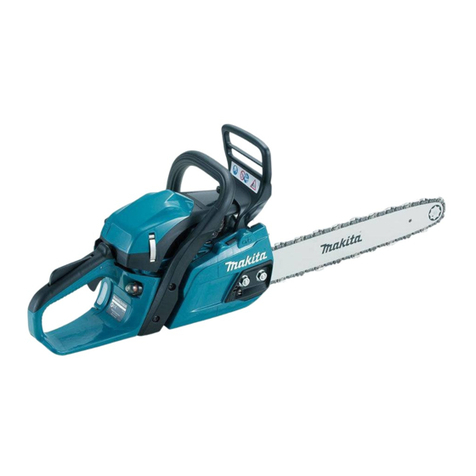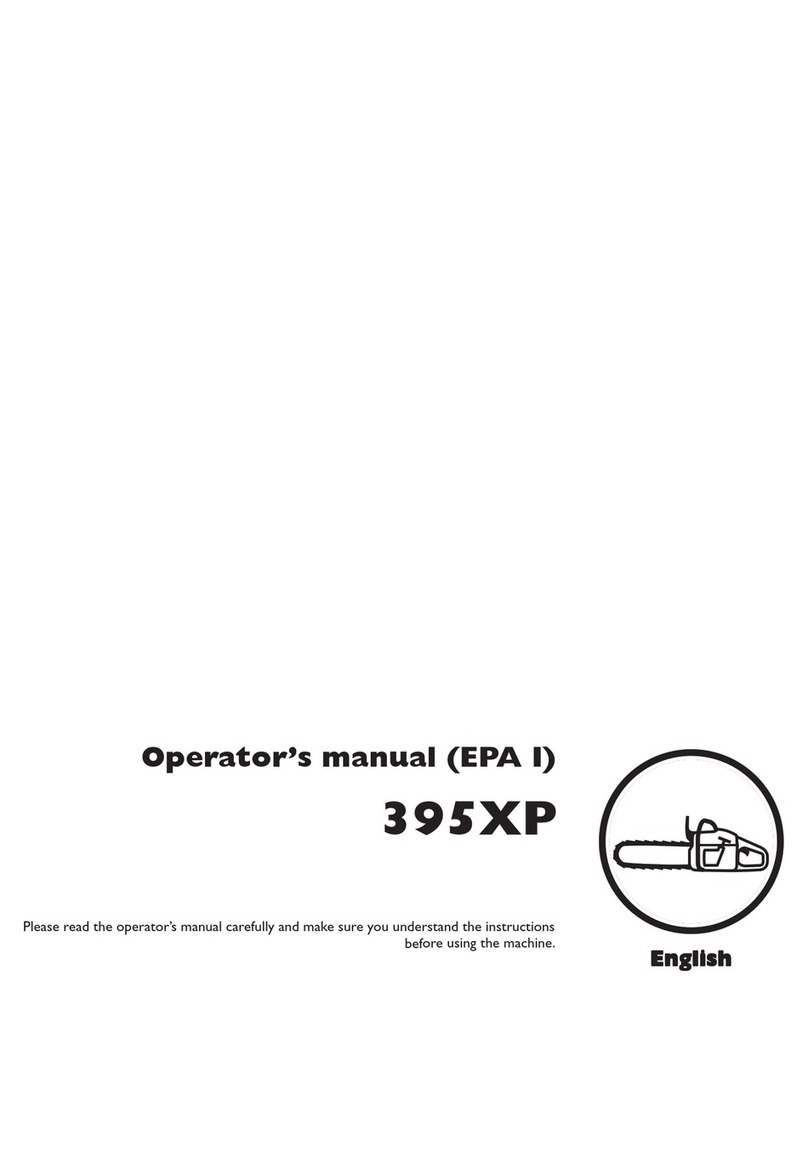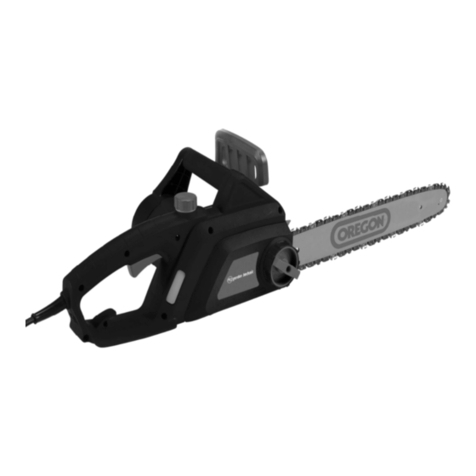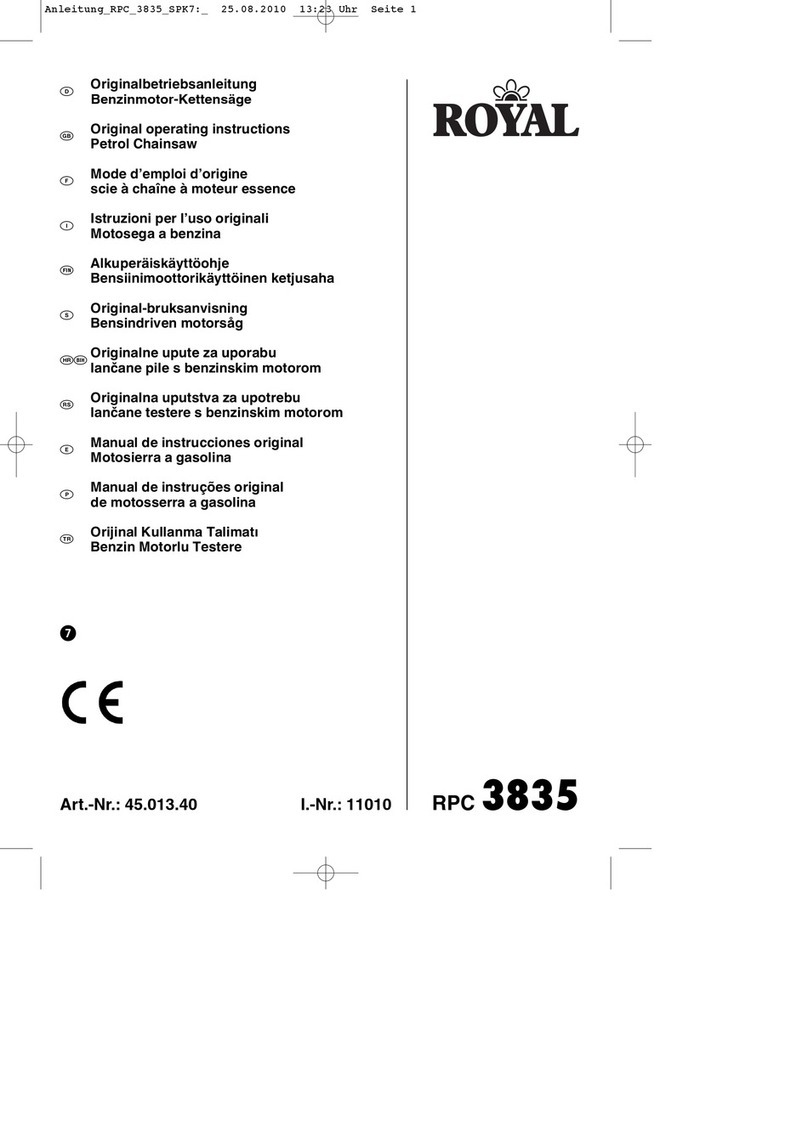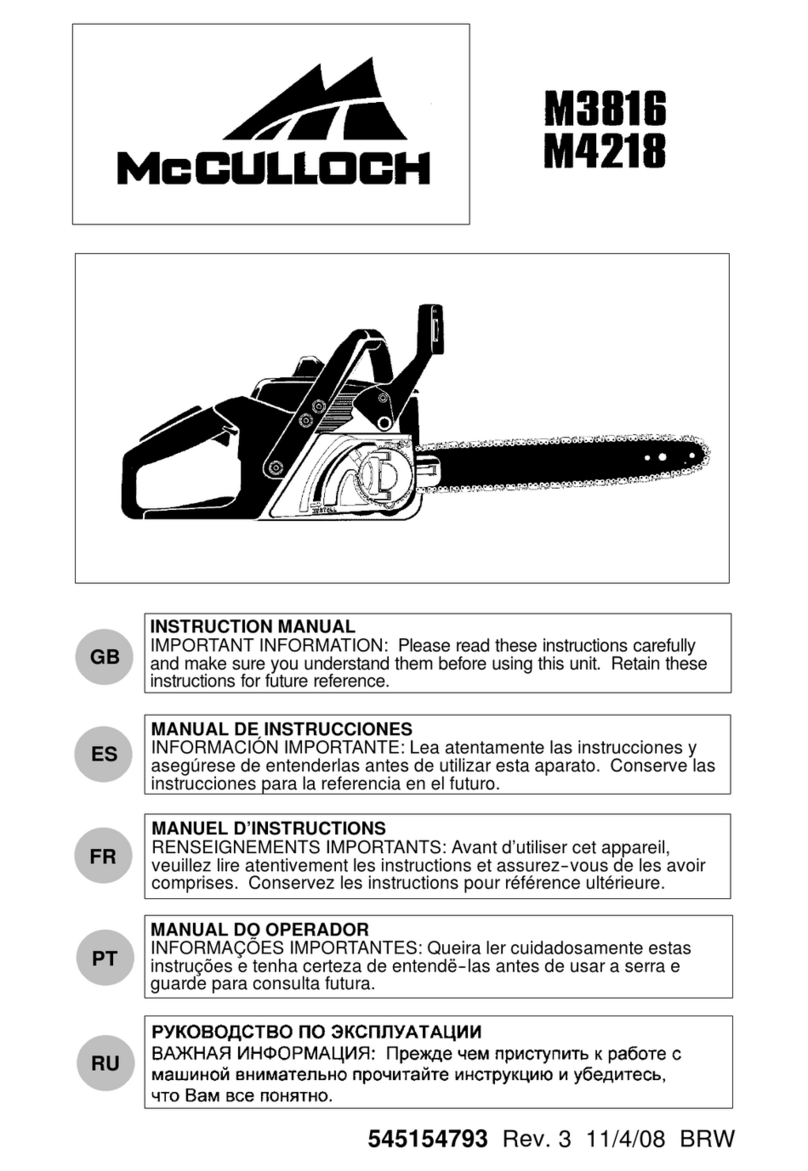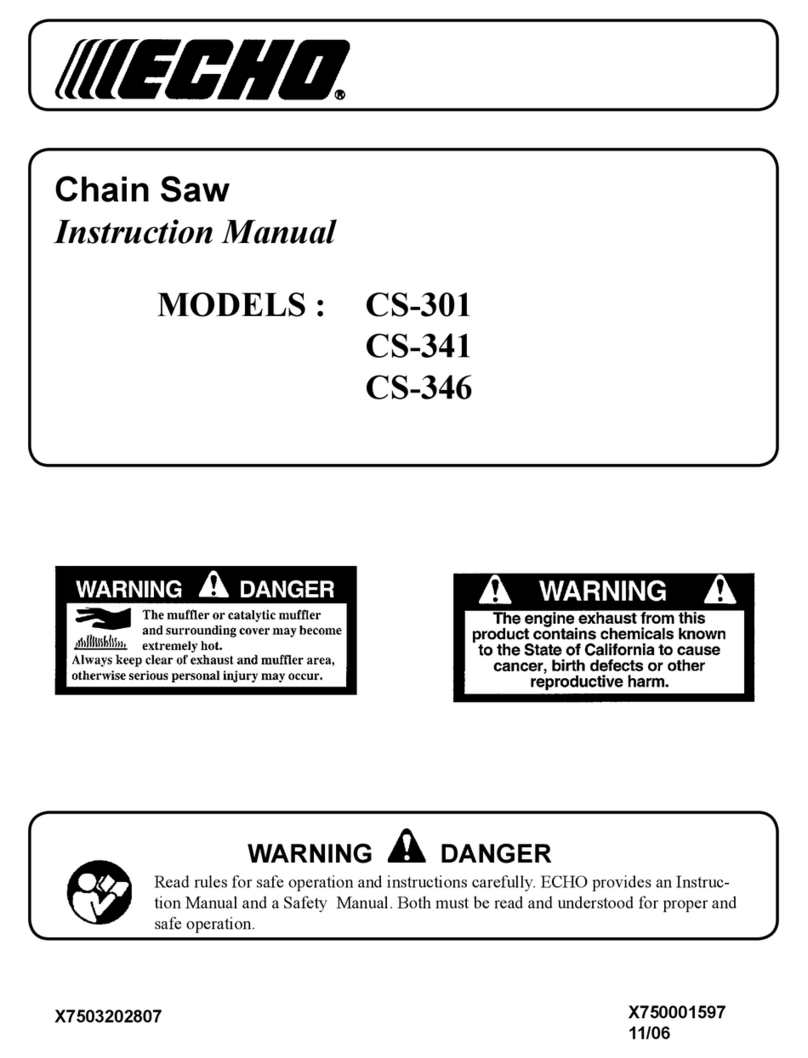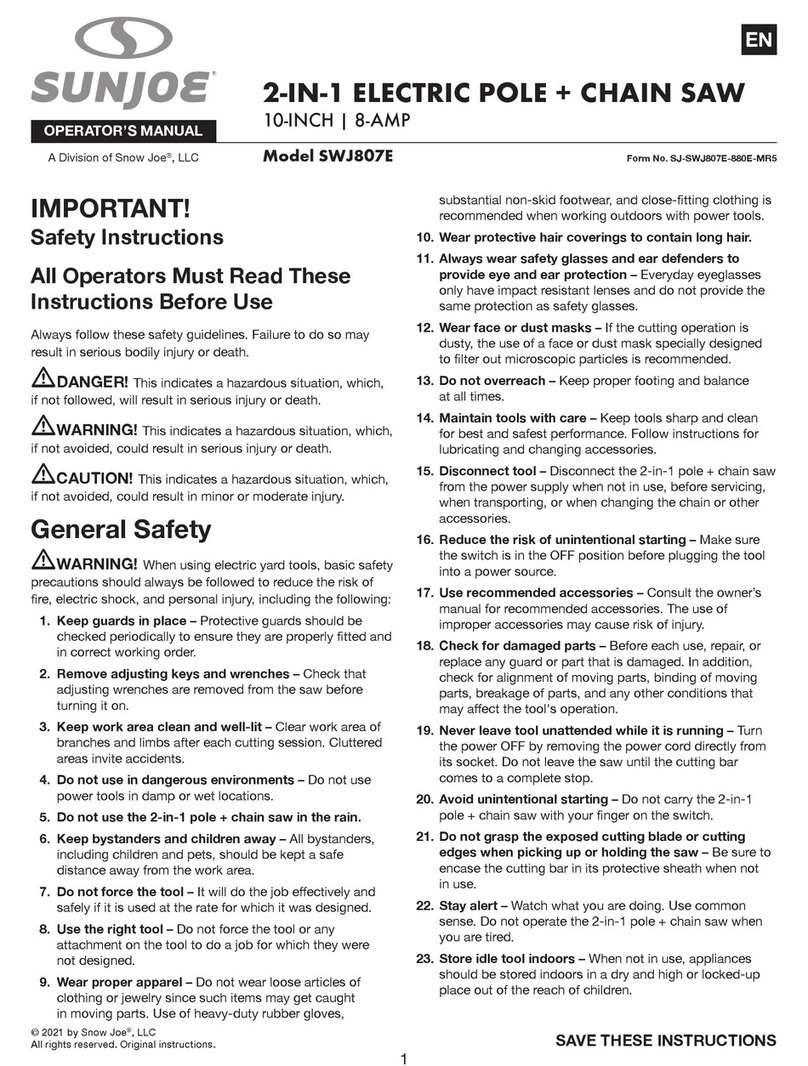
2
SAFETY RULES
WARNING: Always disconnect
spark plug wire and place wire where it can-
not contact spark plug to prevent accidental
starting when setting up, transporting, ad-
justing or making repairs except carburetor
adjustments.
Because a chain saw is a high-speed wood-
cutting tool, special safety precautions must
be observed to reduce the risk of accidents.
Careless or improper use of this tool can
cause serious injury.
PLAN AHEAD
SRead this manual carefully until youcom-
pletely understand and can follow all
safety rules, precautions, and operating
instructions before attempting to use the
unit.
SRestrict the use of your saw to adult us-
ers who understand and can follow safe-
ty rules, precautions, and operating in-
structions found in this manual.
Snug
Fitting
Clothing
Safety
Shoes Safety Chaps
Heavy Duty
Gloves
Eye
protection
Hearing
protection
Safety Hat
SWear protective gear. Always use steel-
toed safety footwear with non-slip soles;
snug-fitting clothing; heavy-duty, non-
slip gloves; eye protection such as non-
fogging, vented goggles or face screen;
an approved safety hard hat; and sound
barriers--ear plugs or mufflers to protect
your hearing. Regular users should have
hearing checked regularly as chain saw
noise can damage hearing. Secure hair
above shoulder length.
SKeep all parts of your body away fromthe
machine when the engine is running.
SKeep children, bystanders, and animals
a minimum of 30 feet (10 Meters) away
from the work area. Do not allow other
people or animals to be near the chain
saw when starting or operating the chain
saw.
SDo not handle or operate a chain saw
when you are fatigued, ill, or upset, or if
you have taken alcohol, drugs, or
medication. You must be in good physi-
cal condition and mentally alert. Chain
saw work is strenuous. If you have any
condition that might be aggravated by
strenuous work, check with your doctor
before operating a chain saw.
SCarefully plan your sawing operation in
advance. Do not start cutting until you
have a clear work area, secure footing,
and, if you are felling trees, a planned re-
treat path.
OPERATE YOUR SAW SAFELY
SDo not operate a chain saw with one
hand. Serious injury to the operator, help-
ers, bystanders or any combination of
these persons may result from one-
handed operation. A chain saw is in-
tended for two-handed use.
SOperate the chain sawonly in awell-ven-
tilated outdoor area.
SDo not operate saw from a ladder or in a
tree, unless you arespecifically trained to
do so.
SMake sure the chain will not make con-
tact with any object while starting the en-
gine. Never try to start the saw when the
guide bar is in a cut.
SDonot put pressure onthe sawat theend
of the cut. Applying pressure can cause
you to lose control when the cut is com-
pleted.
SStop the engine before setting the saw
down.
SBe alert for springback when cutting a
limb that is under tension so you will not
bestruck bythe limb orsawwhen the ten-
sion in the wood fibers is released.
MAINTAIN YOUR SAW IN GOOD
WORKING ORDER
SHave all chain saw service performed by
a qualified service dealer with the excep-
tion of the items listed in the maintenance
section of this manual. For example, if
improper tools are used toremove or hold
the flywheel when servicing the clutch,
structural damage tothe flywheel can oc-
cur and cause the flywheel to burst.
SMake certain the sawchain stops moving
when the throttle trigger is released. For
correction, refer to CARBURETOR AD-
JUSTMENTS.
SNever modify your saw in any way. Use
only attachments supplied or specifically
recommended by the manufacturer.
SKeep the handles dry, clean, and free of
oil or fuel mixture.
SWith the engine stopped, hand carry the
chain saw with the muffler away from
your body, and the guide barand chain to
the rear, preferably covered with a scab-
bard.
SKeep fuel and oil caps, screws, and fas-
teners securely tightened.
SUse only Poulan accessories and re-
placement parts as recommended.
HANDLE FUEL WITH CAUTION
SDonot smoke while handling fuel orwhile
operating the saw.
SEliminate all sources of sparks orflame in
the areas where fuel is mixed, or poured.
There should be no smoking, open
flames, or work that could cause sparks.
Allow engine to cool before refueling.

